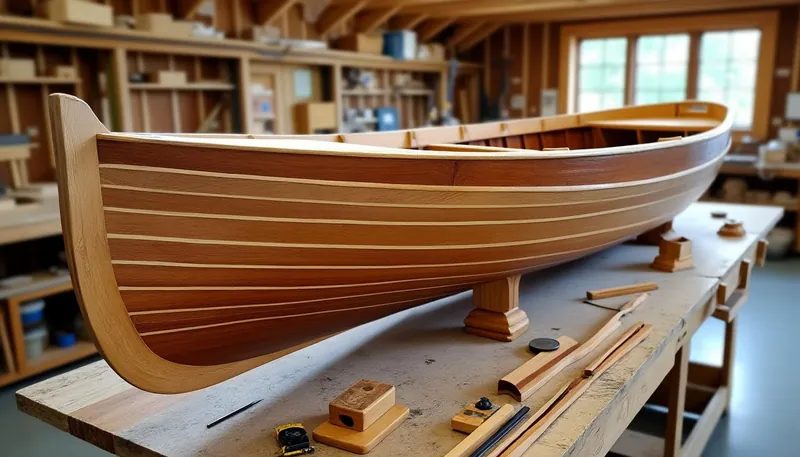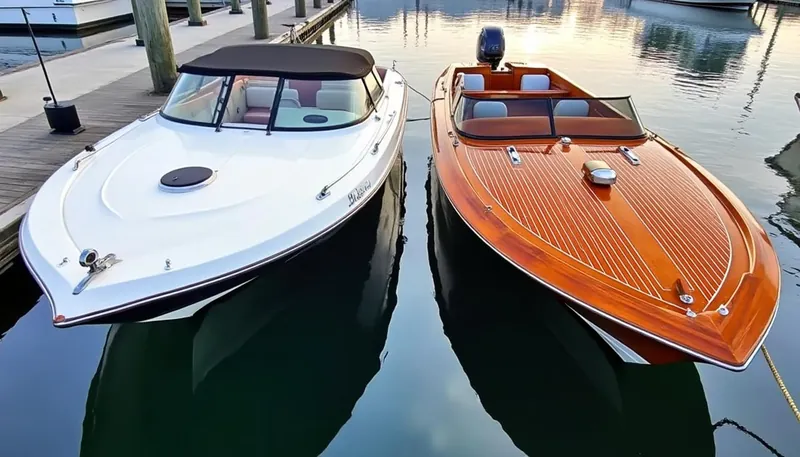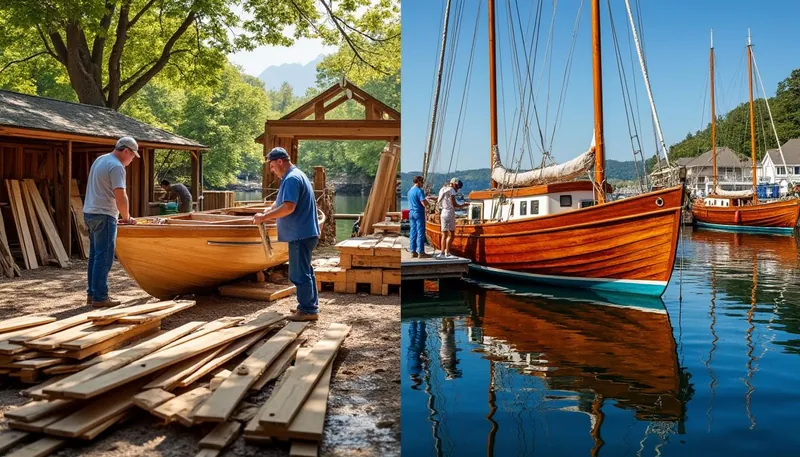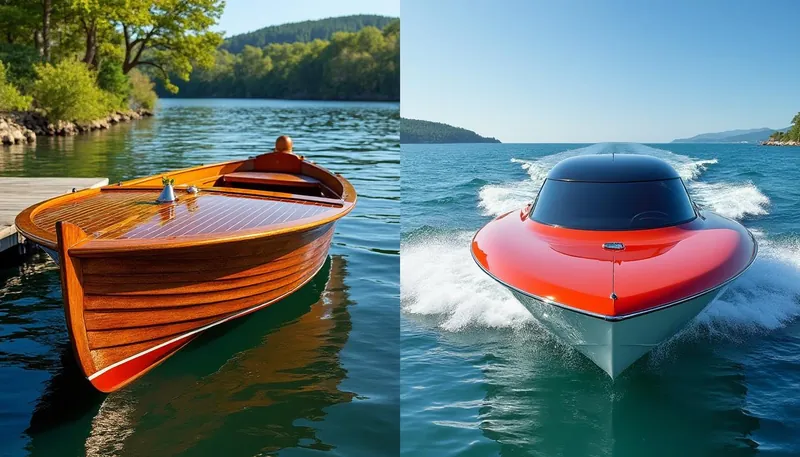Boating enthusiasts often find themselves caught in the timeless debate of whether wooden boats are more expensive to build or maintain compared to their fiberglass counterparts. This question delves deep into the heart of maritime craftsmanship and management, and it’s essential to explore various dimensions of costs associated with both building and maintaining these classic vessels. Factors like material quality, labor, aesthetic appeal, and longevity come into play, often leading to a paradigm that isn’t entirely black and white.
While wooden boats evoke a sense of traditional craftsmanship and are deeply rooted in nautical history, they also come with their unique set of challenges. On the other hand, fiberglass boats offer modern benefits but often lack the elegance and charm that wooden boats exude. As the boating industry evolves in 2025, these discussions are more relevant than ever, bringing together both long-time devotees of the sea and newer adventurers seeking the perfect craft for their journeys. This article aims to dissect the comparisons, breaking down the costs and implications involved in bringing a wooden boat from vision to reality and keeping it seaworthy for years to come.
Brief:
- 📊 Wooden boats often have higher initial construction costs due to material and labor demands.
- 🛠️ Daily maintenance and care for wooden boats can add up significantly over time.
- ⏳ With proper upkeep, wooden boats can boast impressive longevity compared to fiberglass models.
- 💸 Resale values of wooden boats generally fetch higher prices, appealing to future owners.
- ⚖️ Comparative cost analysis shows that fiberglass boats may need neglect to show lower maintenance costs.
Understanding the Costs of Building Wooden Boats
Building a wooden boat is an art form that requires both skill and an appreciation for timeless craftsmanship. Each boat, from a classic Chris-Craft to a luxurious Riva, embodies unique structural elements that directly influence the cost. Materials such as mahogany, teak, and oak are often used in construction due to their durability and beauty, but they come at a premium. Additionally, sourcing high-quality wood that is ethically harvested becomes a consideration many builders must grapple with.
The intricacies of the construction process also contribute to the building costs. For example, skilled labor is necessary for shaping and assembling wooden components. It’s not just a matter of cutting and nailing; precise fitting, sanding, and finishing require experience. This labor-intensive approach generally leads to higher labor costs compared to building a fiberglass boat, which often utilizes automated manufacturing techniques. Here’s a breakdown of the average costs associated with building a wooden boat:
| Component | Average Cost (USD) |
|---|---|
| High-Quality Wood | $4,000 – $20,000 |
| Labor | $5,000 – $15,000 |
| Design & Engineering | $2,000 – $10,000 |
| Miscellaneous (Hardware, Fasteners) | $1,000 – $5,000 |
| Total Average Building Cost | $12,000 – $50,000+ |
Given the allocation of resources, it’s easy to see that building a wooden boat can quickly escalate in price. Brands known for their classic craftsmanship, such as Hinckley or Grand Banks, further push these numbers due to brand prestige and quality. For many sailors, however, the investment is worth it for the aesthetic beauty, craftsmanship, and unique character that wooden boats offer.

The Value of Maintenance for Wooden Boats
Once built, maintaining a wooden boat is where the story continues. Unlike their fiberglass cousins, wooden boats require consistent upkeep to prevent deterioration from moisture, rot, and pests. The reality is that while they can be stunningly beautiful and traditionally elegant, the upkeep involved in maintaining their condition can be demanding. Below are several maintenance aspects to consider:
- 🧽 Cleaning and Maintenance: Regular cleaning of the hull is essential to prevent the growth of mold and algae.
- ⚒️ Sanding and Sealing: Every few years, wooden boats must be sanded down and re-sealed to keep the wood protected.
- 🪵 Repairing Sections: Over time, sections may need to be repaired or replaced if they have been damaged or rotted due to exposure.
- 🎨 Finishing Work: The topsides, where paint or varnish is often applied, can require fresh coats every 1-2 years, creating a consistent expense.
Let’s break down the average costs associated with maintaining a wooden boat on a yearly basis:
| Maintenance Task | Estimated Cost (USD) |
|---|---|
| Cleaning | $300 – $500 |
| Wood Treatment and Repair | $1,000 – $2,500 |
| Painting or Varnishing | $500 – $1,500 |
| Total Average Maintenance Cost Per Year | $1,800 – $4,500+ |
While the upfront costs of building may be steep, many wooden boat enthusiasts find that the craftsmanship and love poured into these vessels create unique bonds that are worthwhile in the long run. However, if an owner chooses to neglect these essential maintenance practices, they may find that a boat which was cherished and well-maintained can quickly turn into a project requiring extensive renovations.
Comparing Wooden and Fiberglass Boat Maintenance Costs
The debate continues as to whether the maintenance costs of wooden boats are truly greater than those of fiberglass boats. It’s crucial to understand the nuances of this comparison. The general assumption is that fiberglass boats incur less maintenance due to their synthetic nature, offering a certain level of neglect. Indeed, a fiberglass boat can withstand years of minimal care without facing immediate repercussions. However, true maintenance costs become comparable when both boats are cared for equally.
If you analyze two boats of the same age and condition—one wooden, one fiberglass—you might find that the necessary maintenance efforts yield relatively similar costs in the long run if both are kept in a state of good repair. Some points of differentiation include:
- 🔧 Durability: Fiberglass can endure wear and tear better than wood, but if a wooden boat is cared for, it can surpass the durability of fiberglass in longevity.
- 📅 Maintenance Frequency: Wooden boats may require more frequent maintenance at shorter intervals, while fiberglass boats may need less consistent attention but result in increased costs if neglected.
- 🛠️ Repair Processes: Repairing fiberglass usually involves sanding down the damaged area and applying resin, while wooden repairs may involve replacing entire sections, which can be more labor-intensive.
When both types of boats are maintained properly, their annual maintenance costs can often be very similar. This reality flips the narrative that wooden boats always carry a heavier maintenance burden. Additionally, it remains noteworthy that skilled service for wooden boats may be harder to find outside regions renowned for such craftsmanship, such as New England.

A Look at Resale Values
As we dive deeper into the financials, resale value becomes a key consideration. Wooden boats often maintain higher values both in aesthetic appeal and quality craftsmanship. The allure of owning a classic wooden model like a Bertram or Hacker-Craft can attract buyers willing to pay a premium for meticulous restorations or well-maintained classics. Here are some insights into this aspect:
- 💰 Higher Demand: Many boating enthusiasts actively seek wooden boats, maintaining strong resale values.
- 🎨 Artistic Appeal: A beautifully restored wooden boat often commands a price that reflects its craftsmanship, while a similar fiberglass boat may struggle to achieve the same market interest.
- 🔄 Market Longevity: As wooden boats become rare over time, their values may increase, providing financial benefits to past owners, a trend that might not be seen with newer fiberglass models.
A detailed comparison of average resale values indicates:
| Boat Type | Expected Resale Value after 10 Years (USD) |
|---|---|
| Wooden Boat | $25,000 – $150,000+ |
| Fiberglass Boat | $15,000 – $60,000+ |
This contrast illustrates that while initial investments in wooden boats might themselves be steep, the long-term financial returns have the potential to be exceptionally rewarding, whereas fiberglass boats may not achieve the same growth potential.
Craftsmanship and the Art of Ownership
Ultimately, the decision between wooden and fiberglass comes down to personal preference and values. Many admirers of wooden boats will argue that the experience of ownership transcends financial measurements. The craftsmanship, the story behind each vessel, and the community surrounding wooden boating provide an enriching atmosphere that fiberglass simply cannot compete with.
Each aspect, from customizing designs with companies like Vicem to savoring the appeal of a classic at Brooklin Boat Yard, contributes to the unique charm of wooden boats. Many appreciate the opportunity to be intimately involved with every facet of their boat—whether it’s through routine maintenance or restoration projects—creating lasting bonds that few other types of vessels can engender.
Thus, while wooden boats may seem more expensive to maintain up front, they offer a rewarding lifestyle and tradition. Ultimately, those willing to dedicate time and resources toward these vessels often find themselves rewarded with extraordinary experiences both afloat and on land.
Why is the initial cost of wooden boats higher?
The initial cost of wooden boats is higher due to the expensive materials and the labor-intensive craftsmanship involved in building them.
Do wooden boats require more maintenance over time?
Yes, wooden boats typically require more maintenance due to the risk of rot and deterioration, but if properly maintained, their longevity can exceed that of fiberglass boats.
Are wooden boats more valuable at resale?
Generally, yes. Wooden boats often maintain higher resale values due to their craftsmanship and scarcity, appealing to enthusiasts.
How do fiberglass boats compare in terms of maintenance?
Fiberglass boats usually require less intensive maintenance, but neglect can lead to significant costs down the line, making maintenance comparable to wooden boats if both are well-cared for.
What should I consider before buying a wooden boat?
Consider maintenance commitment, repair skills, and the overall costs of ownership versus the aesthetic and community aspects attached to owning a wooden boat.


